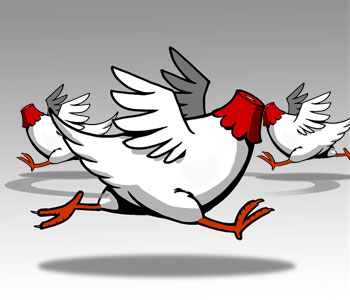The analyst’s essential role: engage your emotions about the future

We pay attention to the now. That’s especially true because Facebook spreads it, instantly. But what matters is not the now, it’s the future. The job of the true analyst is make you care as much about that future as the ephemeral distractions of the present.
This came into crystal focus for me when I read Austin Gunter’s post about “engragement,” which he defines as follows:
Engragement: noun. News and media designed to capture our attention and engage us by enraging us in order to drive ad revenue.
As Gunter points out, you don’t have to agree with an article to spread it. “Look at the outrageous thing that Breitbart published,” the liberal’s post reads. You click on it. You get enraged. You share your enragement. And the whole cycle repeats.
Engragement works. Worse, it’s influencing our media ecosystem, because it spreads and supports news that focuses on emotions, not facts. Engragement is now the business model of online media. We could fix it . . . but that would take a while, and of course, we’re focused on the now.
Engragement elected Donald Trump
Engragement is not just the business model of news, it’s now the model of politics, as well. In the recent presidential election, Donald Trump was adept at pointing our attention to outrageous things happening now — and outrageous tweets about them. If you were upset with the reality and agreed with him, you spread what he said. If you were upset with him and what he said, you also spread what he said. His short-attention-span, vindictive, Twitter-driven campaign connected with people for whom engragement was a way of thinking.
Hillary Clinton focused more on the long-term. She said she needed to study things. Because she would extend so many of Obama’s policies, she was focused on fixing Obamacare, fixing our foreign policy, fixing racial injustice. Fixing things takes a while, and it doesn’t engage the emotions. While she engaged plenty of her supporters in states like California, she failed to connect with enough engraged voters in the rust belt. So she lost the election.
The role of the analyst is to bring the future into the present
If you have become enraged by what I said about the election and are off to link to this post and say what an idiot I am — well, thanks for spreading my perspective.
Because now I can get to my real point, which is how analysts can cure our myopia.
I worked as an analyst for 20 years. While I analyzed technology, what I am about to say applies to all kinds of true analysts, including financial and business analysts, whether they work for a university, an analyst firm or a company.
The predictive job of the analyst is to see what is happening now, what large-scale changes that might cause, and what that means for the future. The analyst must tell a story about that future, typically in the form of a report. And ideally — that is, if the analyst wants anyone to pay attention — that story explains how the future will be dramatically different from the present.
For example:
- The World Resources Institute estimated that sea levels along Florida’s coastline could rise by a foot or two. This could cause billions of dollars of damage from hurricanes every five years or so, and put $7 billion of Miami property underwater.
- According to Oxford University engineering professors Carl Benedikt Frey and Michael A. Osborne, 47% of jobs in the U.S. are at risk due to pressures from automation. The wages for workers subject to computerization continue to drop. Elon Musk predicts that this will lead to the need for a system in which the government provides a basic income to everyone.
- Gartner predicts that by 2020, 100 million people will shop in virtual reality, and by 2019, 20% of brands will abandon their mobile apps. This massive shift in technology resources will make the skills of a generation of technology workers obsolete, even as it makes today’s hot devices irrelevant.
Holy crap!
In each of these three cases, the researchers and analysts identified a trend which is small today, projected the consequences of that trend, and reached a shocking conclusion.
This was our stock in trade when I was at Forrester. Charlene Li foresaw the rise of online advertising, the end of classified advertising, and the decline of display ads, and predicted huge pressure on newspapers. In one report, I identified the pattern that started with the decline of the online music business and predicted when and how similar declines and transformations would hit other media businesses like magazines, television, movies, and radio. My colleagues like Sucharita Mulpuru tracked the rise of online retail over decades, and made predictions of disruptions that are now visible as retailers like Sears and Macy’s close hundreds of stores.
These sorts of reports and analyses get attention. They’re why analysts get quoted in news articles. And they’re the only way the disruptions of the future can get equal time with the screaming, but ephemeral, outrages of the present.
What are the trends that look minor today but will transform the world in the next few years or decades?
If you’re an analyst, your job is not just to identify those trends, but to turn them into stories and dramatize them. Decision-makers — and ordinary readers — are depending on you. You’re the only thing between us and the car-crash distractions of the engragement media economy.